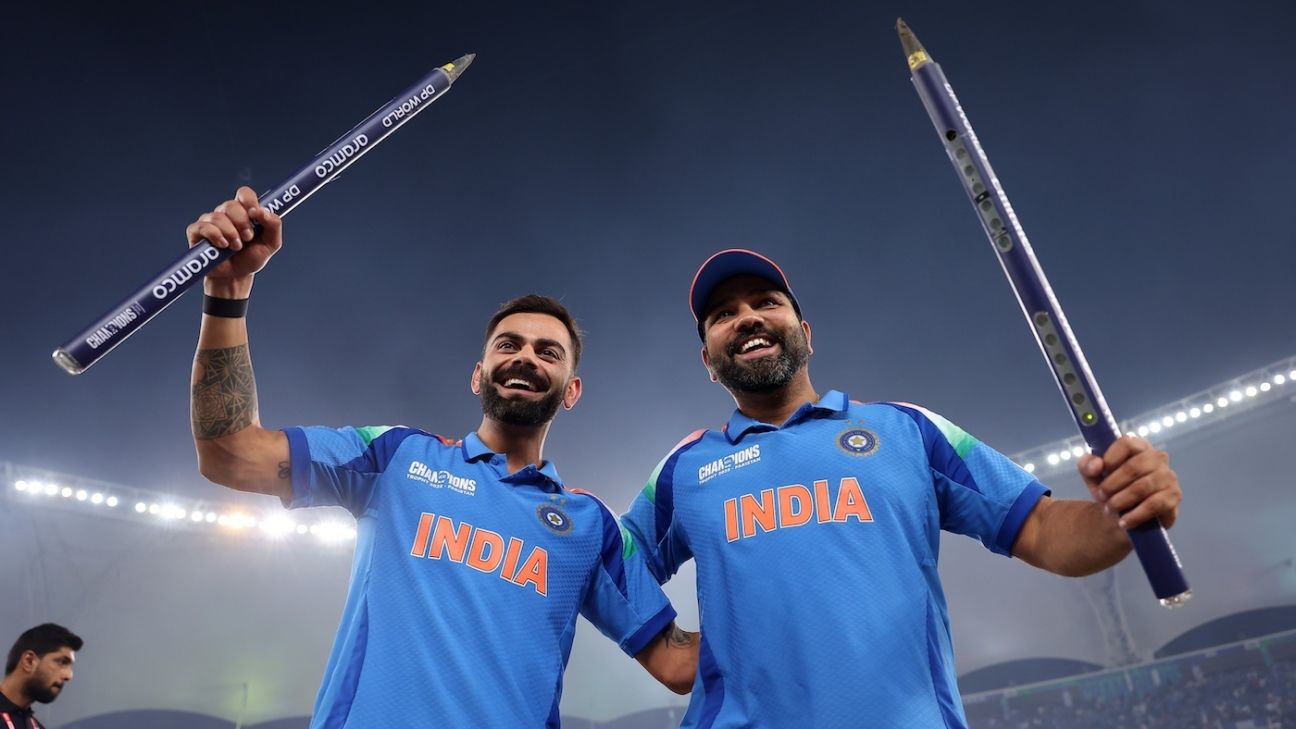Cliff Notes – Josh Hazlewood and the beauty of a wicketless spell
- Josh Hazlewood’s meticulous bowling, characterised by accuracy and subtle seam movement, resulted in 10 overs for just 29 runs, showcasing his ability to create chances without taking wickets.
- Despite not claiming any wickets, Hazlewood’s performance significantly pressured the batters, with 43 of his 60 deliveries being dot balls and a mere 55% control for the batters facing him.
- His consistent line and length, combined with the conditions, allowed him to maintain effectiveness throughout the innings, demonstrating that wicketless spells can still have a profound impact on the match.
Josh Hazlewood and the beauty of a wicketless spell
One of the idiosyncrasies of cricket is that not all new balls are the same. Sometimes you can end up with a bum ball that doesn’t swing. Sometimes you get a good one that hoops. So the choice is given to the bowling team. They pick out a new ball [two in ODIs] from a box of new balls. Usually the experienced fast bowler in a side does so. They look for balls that feel “small” in their hand. Which, you can imagine, might be a problem when Josh Hazlewood chooses the ball.
Every ball seems small in Hazlewood’s hands. And he lets it so beautifully from his high release point that if there is any seam movement available from the pitch, he is certain to get it. You give him some moisture in the pitch to work with, and you get the kind of spell for ages that Hazlewood delivered in Adelaide.
Editor’s Picks
1 Related
It is not often that you watch a close match where the result margin is two wickets, and your lasting memory of the day is the work of a bowler who didn’t take any wicket. And yet, if rain or some other circumstance had ended the game at the 38th over of the first innings, the organisers would be justified in refusing any refunds because Hazlewood’s 10 overs for 29 runs had already been worth the gatemoney.
Forty-three of the 60 deliveries were dots, 21 times he beat the bat, got the edge on six occasions, but was just not lucky enough to get a wicket. In an ODI that eventually featured runs at well over five an over, batters were in control only 55% of the time when facing Hazlewood. And he didn’t bowl to the tail. Fifteen of those 21 plays and misses were defensive shots.
It is just his luck that Rohit Sharma comes out to play the only format he now plays for the first time in seven months and in front of him has been Hazlewood on early-season Australian pitches with bounce and moisture. After getting done in in Perth, Rohit decided to give himself some time in Adelaide. He even played out two successive maidens from Hazlewood. It didn’t matter, though, how much time he gave himself. Hazlewood was not leaving the good length outside off with subtle changes in release. Some balls nipped away, some jagged back in. Even the ones that went straight on were so accurate you couldn’t take liberties with them.
Like a fine machine, Hazlewood kept going on and on for seven overs with the new ball. Poor Rohit faced 31 of those 42 deliveries. Shreyas Iyer faced nine, and even in that brief period he was made to dance and fumble for the ball.
Not once did Hazlewood go searching. He was happy to keep bowling the good length and wait for the wicket. If he didn’t get it, he was at least creating chances for the bowlers at the other end.
After Hazlewood’s first spell was over and the movement settled down, Rohit and Iyer displayed their quality in scoring half-centuries. The vexing part, though, is that when Hazlewood came back for his second spell in the 34th over, the ball started nipping around again. It started to look small in his hands again. The high release, the high vertical speed, and whatever juice was still available was extracted again.
On another day, Hazlewood could have easily walked away with a five-for with a performance of this quality. Somewhere in a deep sadistic corner of his heart, you wonder if he enjoys such tormenting of helpless batters just as much as he does taking wickets. Especially in limited-overs cricket, where these tight overs still have a significant impact on the wickets others get and the overall score.





